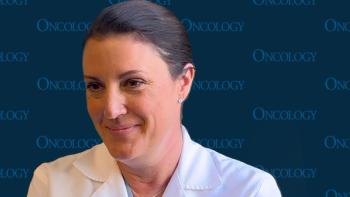
Oncology NEWS International
- Oncology NEWS International Vol 4 No 3
- Volume 4
- Issue 3
Antman Provides Outlook on Use of High-Dose Chemo
ATLANTA--In laboratory models, the "highest possible doses of chemotherapy" and a combination of agents are necessary to achieve curative therapy in breast cancer, Karen H. Antman, MD, said at the American Society of Clinical Oncology's (ASCO) Educational Conference. But when treating breast cancer with drugs that damage stem cells, "you may not be able
ATLANTA--In laboratory models, the "highest possible dosesof chemotherapy" and a combination of agents are necessaryto achieve curative therapy in breast cancer, Karen H. Antman,MD, said at the American Society of Clinical Oncology's (ASCO)Educational Conference. But when treating breast cancer with drugsthat damage stem cells, "you may not be able to give evenone dose without stem cell support," she said.
Breast cancer is an ideal tumor in which to study high-dose chemotherapy,based on its sensitivity at conventional doses, said Dr. Antman,professor of medicine and chief of the Division of Medical Oncology,Columbia University College of Physicians and Surgeons.
In the laboratory, resistance to alkylating agents can often beovercome by using a five- to 10-fold higher dose. Clinically,a one- or twofold increase has produced mixed results, she said.
For patients with previously untreated or responding metastaticbreast cancer, investigators have used several approaches to high-dosetherapy, including an induction regimen that reduces tumor sizeand may also decrease the number of resistant cells, she said.Sequential trials are underway at several centers to find thebest induction regimen before proceeding to randomized trials.
Breast Cancer and ABMT
In reviewing data collected by the North American Autologous BoneMarrow Transplant Registry, Dr. Antman noted that high-dose chemotherapywith stem cell support has become an increasingly used procedurefor breast cancer and that, since 1991, breast cancer has beenthe most common diagnosis for autologous transplantation.
Transplant procedures for breast cancer have increased fivefoldsince 1989 when 261 transplants were reported to the registry.That number was almost 1,000 in 1992, and for the first 9 monthsof 1993, was already up to 812, she said.
Transplants are also being used at a lower stage of disease. StageII and III disease comprised 3% of breast cancer patients undergoingABMT in 1989 and 28% in 1993. The number of patients with resistantdisease is falling--from 21% in 1989 to 8% in 1993. Finally, theprocedure has become safer: Mortality fell from 22% in 1989 to6% in 1993, and in major centers is down to about 3%.
Articles in this issue
almost 31 years ago
Selecting a Support Group for Patients With Prostate Carcinomaalmost 31 years ago
Radiofrequency Ablation of Brain Tumors New Optionalmost 31 years ago
Oncologist Enthusiastic About Capitated Planalmost 31 years ago
GAO Says Federal Research Needed on Safety of Portable Cellular Telephonesalmost 31 years ago
Varmins Chooses New Director for NIH Office of Alternative Medicinealmost 31 years ago
'Visible Man' Hits the Internet, Radiologists Get the First Lookalmost 31 years ago
Ultrafast Full-Body MRI Eases Procedure in Claustrophobics, Kidsalmost 31 years ago
WHO Melanoma Study: Interferon Boosts Disease-Free SurvivalNewsletter
Stay up to date on recent advances in the multidisciplinary approach to cancer.


















































































